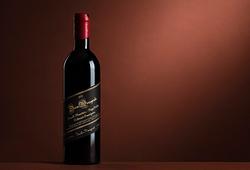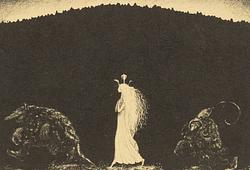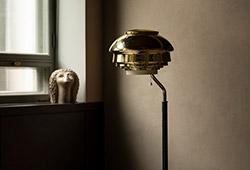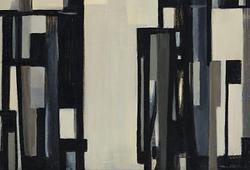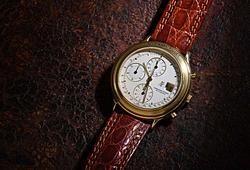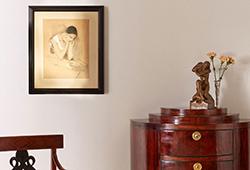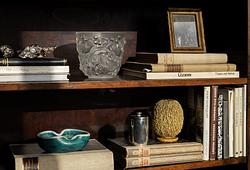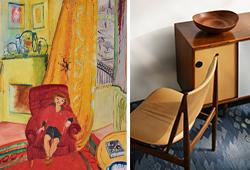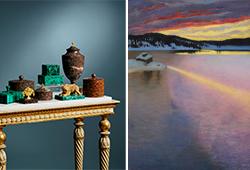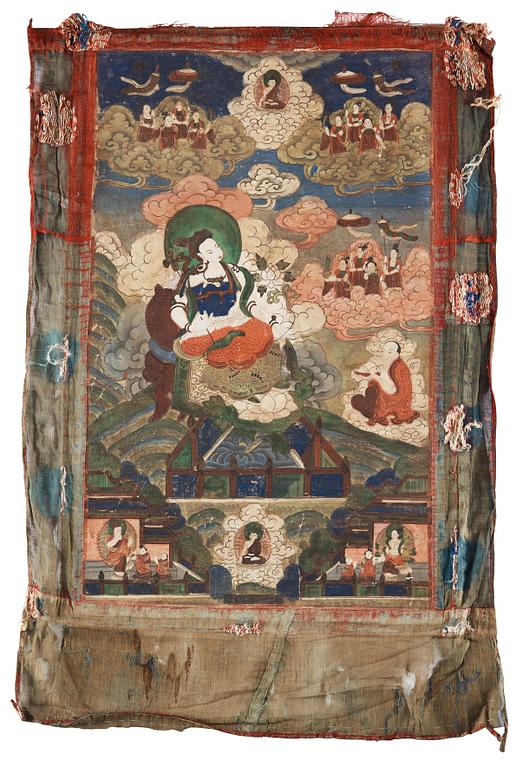THANGKA (2), Bodhisattvas omgivna av buddhistiskt panteon, Beijing School, 1920-tal.
Färg på bomullsduk. A tergo förvanskad sanskrit för "Om Ah Hum". 87,5 x 53,5 cm, samt 58,5 x 41 cm.
Slitage, defekter.
Proveniens
From the Collection of Ove Christian Lunn, Danish Diplomat and Consul General for Denmark in Shanghai 1928-1935. Ove Christian had an exciting diplomatic career and was posted 1910-18 in Oslo, 1918-24 in San Francisco, 1924-28 Melbourne and then finally Shanghai 1928-35. Unfortunately he died of pneumonia one week after returning to Copenhagen in 1935. His wife, Ruth moved in to a house in Vedbaek, where the objects have been ever since
Litteratur
Compare: Lipton, Barbara, & Ragnus, Nima D., Treasures of Tibetan Art. Collections of the Jacques Marchais Museum of Tibetan Art, p 54-55.
Övrig information
This two thangkas belongs to a group of paintings, executed with great energy and spontaneity, possibly by Mongolian and/or Chinese artists associated to the Yonghegong Lama Temple in Beijing. The iconography of the figures follows classical Buddhist description, but also often have unusual depictions of Buddhas and deities. Commonly 'Om Ah Hum' is written in pseudo Sanskrit on reverse of the thangkas.




